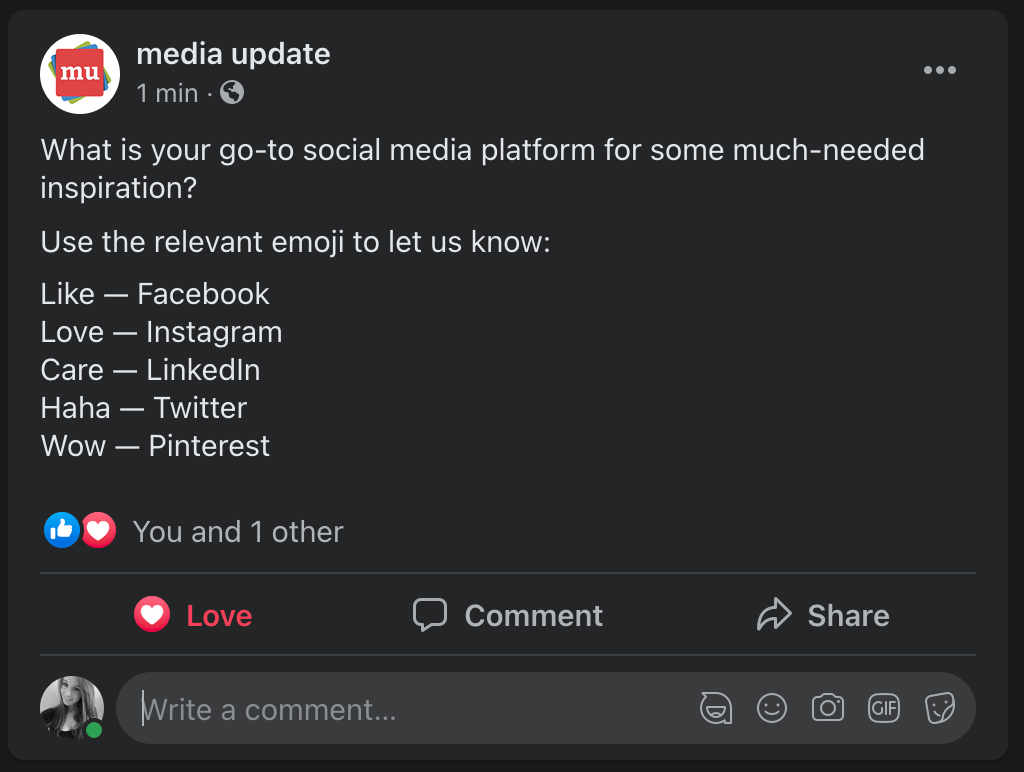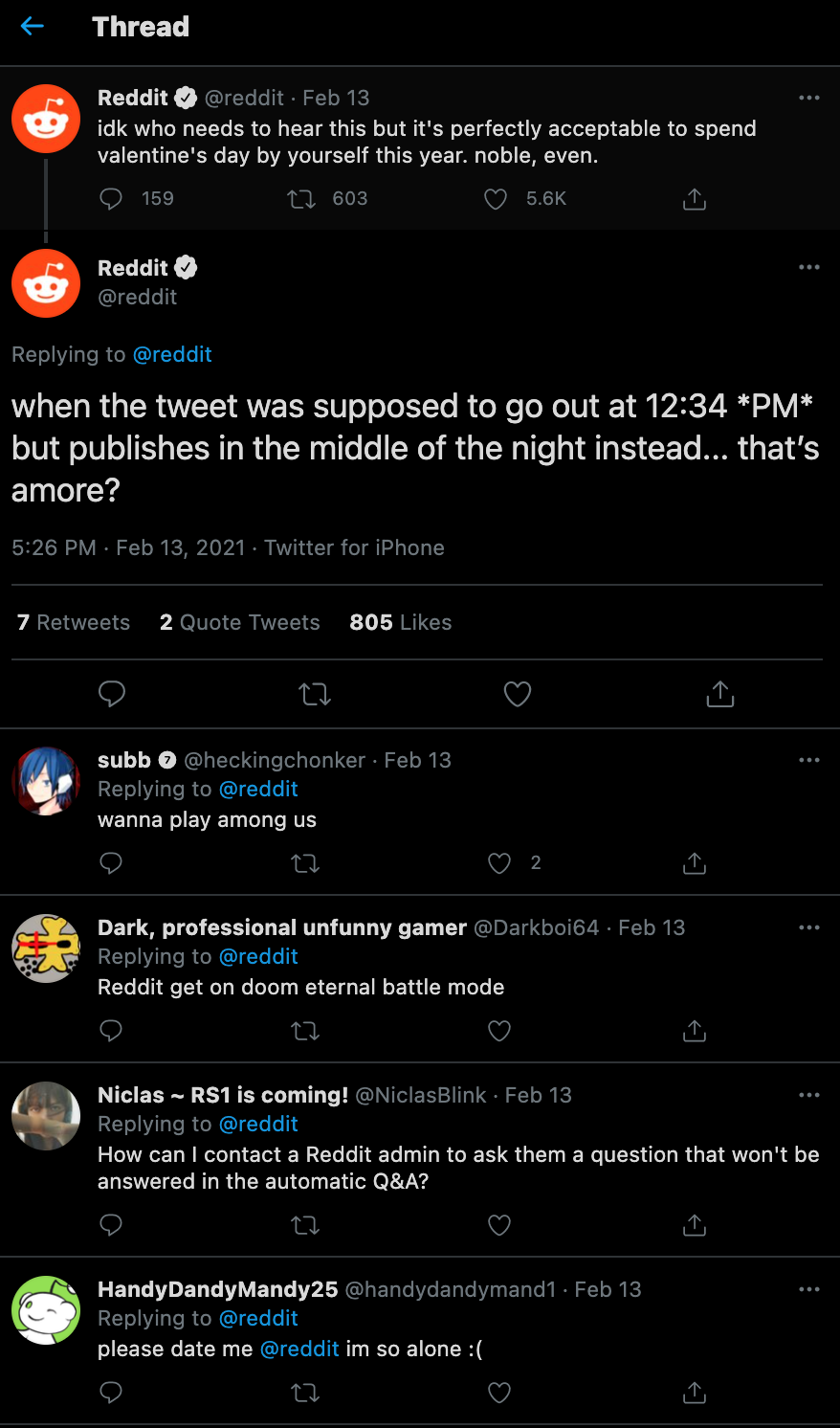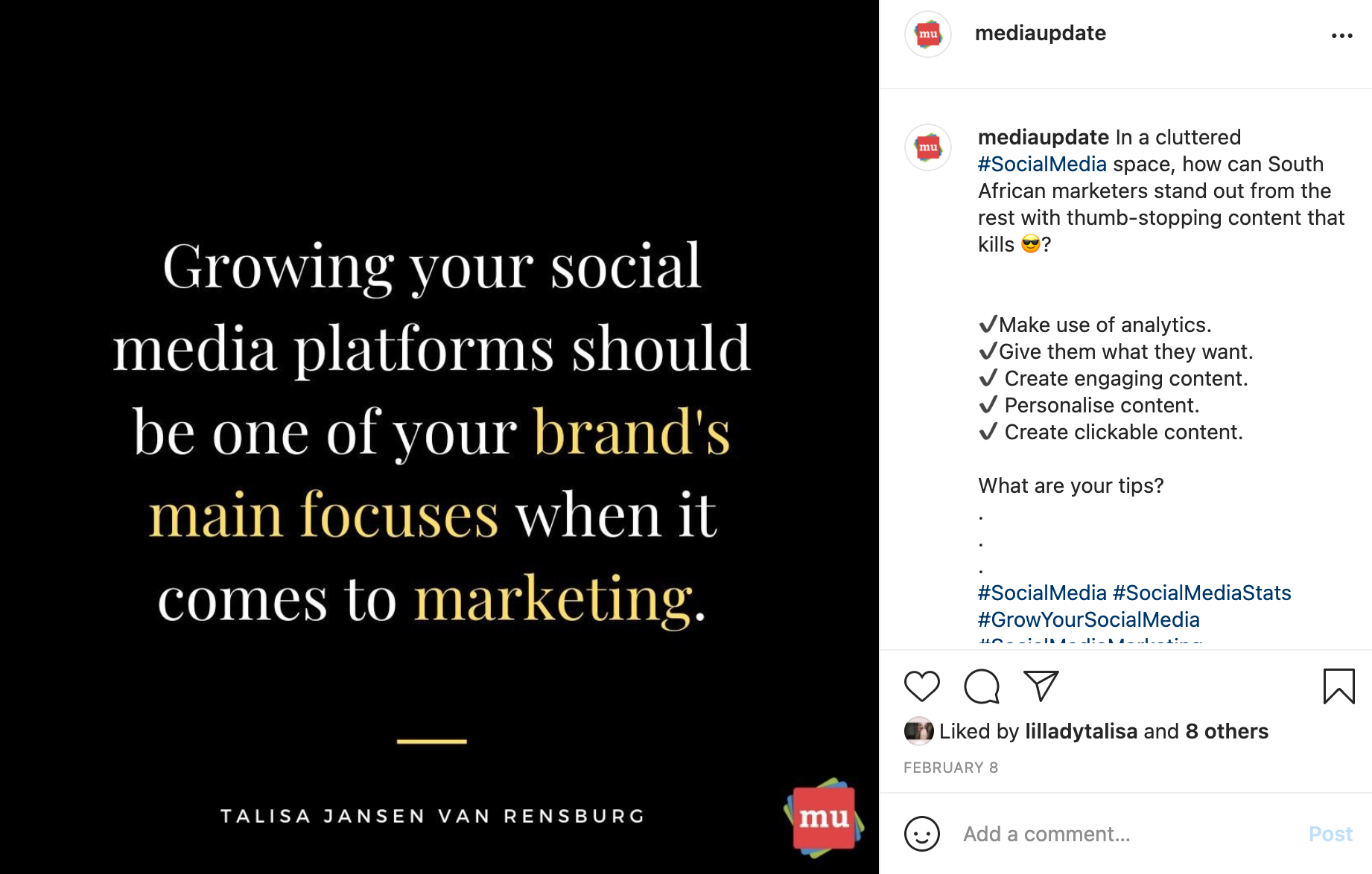Anyone working with social media will know that things can change
fast. So, it’s important to ask difficult questions and be prepared for the unknown.
Being pre-emptive will ensure that you are
always on top of your game and a few steps ahead of competitors.
media update’s Talisa Jansen van Rensburg is taking you down the rabbit hole in the event that the social media landscape transforms overnight. How would you adapt?
Let’s take a look at the three scenarios:
Scenario 1: Facebook removes the ability to comment
Facebook comments are the best way to measure whether or not your online audiences are enjoying your content. By receiving comments, you are able to build a loyal online relationship with your followers. If Facebook suddenly removed this functionality, there would be a big gap in communication between your brand and platform users.
How to work around it:This is where making use of the reaction option can become your best friend. For example, when creating a post, you can state a question and ask the users to let you know what they agree with or how they feel. The user can then respond to the post with the relevant reaction emoji. There are six reaction emojis that users can choose from, including:

Now, you can ask a question and —
viola! You have a fresh way to encourage engagement even after users are no longer able to comment on posts.

Scenario 2: Twitter loses its retweets
Twitter is a fast paced online environment. A brand could post a Tweet and immediately want to remove it only to find that it has already been retweeted over a dozen times.
Retweets are a powerful way to share important information, and if this is removed, getting noticed on Twitter will become a
lot harder. Unless of course you embrace this scary new reality and bring your ‘A’ game.
How to work around it:This is where Twitter threads will become your brand’s main focus. By starting a thread, you can mention and tag the relevant people that
you want to participate in the conversation, and encourage others to follow in their lead. By starting a discussion on a tweet, your brand will also be able to keep track of what others are saying.
Just posting one single thread opens the door for a valuable discussion to take place, and get real meaningful insight. This could prove to be more valuable than an actual retweet.
One of the main benefits of threads is the fact that you can go back to an old tweet and add images, GIFs or just restart the conversation. This way the tweets
‘won’t have such a short lifespan’.
This also means that if your brand did a campaign a few years back and tweeted about it, you can go back and add content to ask your followers for their insights into how they experienced that campaign. Showing your care about your followers’ opinion will also help build your brand's reputation.
A company that has mastered the art of threads is definitely
Reddit, and to add a cherry on top, they make use of humour to better engage with their followers.

Scenario 3: Instagram suddenly has the ability to add links
Brands had to get creative to get their users to go to their blogs, websites or online shops
without having the option to add clickable links in Instagram posts. The only way that a user is able to ‘swipe up’ is if the brand adds a link to their
Instagram Story. And users are only able to do this if they have a business account and more than 10 000 followers on the platform.
But,
lo and behold — the Instagram scenario: What if the platform suddenly allowed clickable links in their content? This changes the entire way of creating content, because now it is a lot easier to just post an image with the link in the caption,
right? Well, not really …
How to navigate it:At first glance, this seems to be a blessing in disguise. Because instead of having to create a cute and informative image that consists of a summary of your recent blog, you can just post it and add the link in the caption. But this is where your brand can fall into a big trap.
In this scenario, it is
vital that you continue to create high-quality content and keep it creative. This is because, if everyone can add clickable links, it will become harder to stand out and get people to engage with
your content. So, be sure to create beautiful images with interesting captions. By doing this, you’ll be able to encourage more click-through rates.
For example, when creating a post, be sure to use the following things:
relevant emojis and
the
right hashtags.
Like so:
 How would you handle these situations? Be sure to let us know in the comments section below.
*Image courtesy of Unsplash
How would you handle these situations? Be sure to let us know in the comments section below.
*Image courtesy of Unsplash